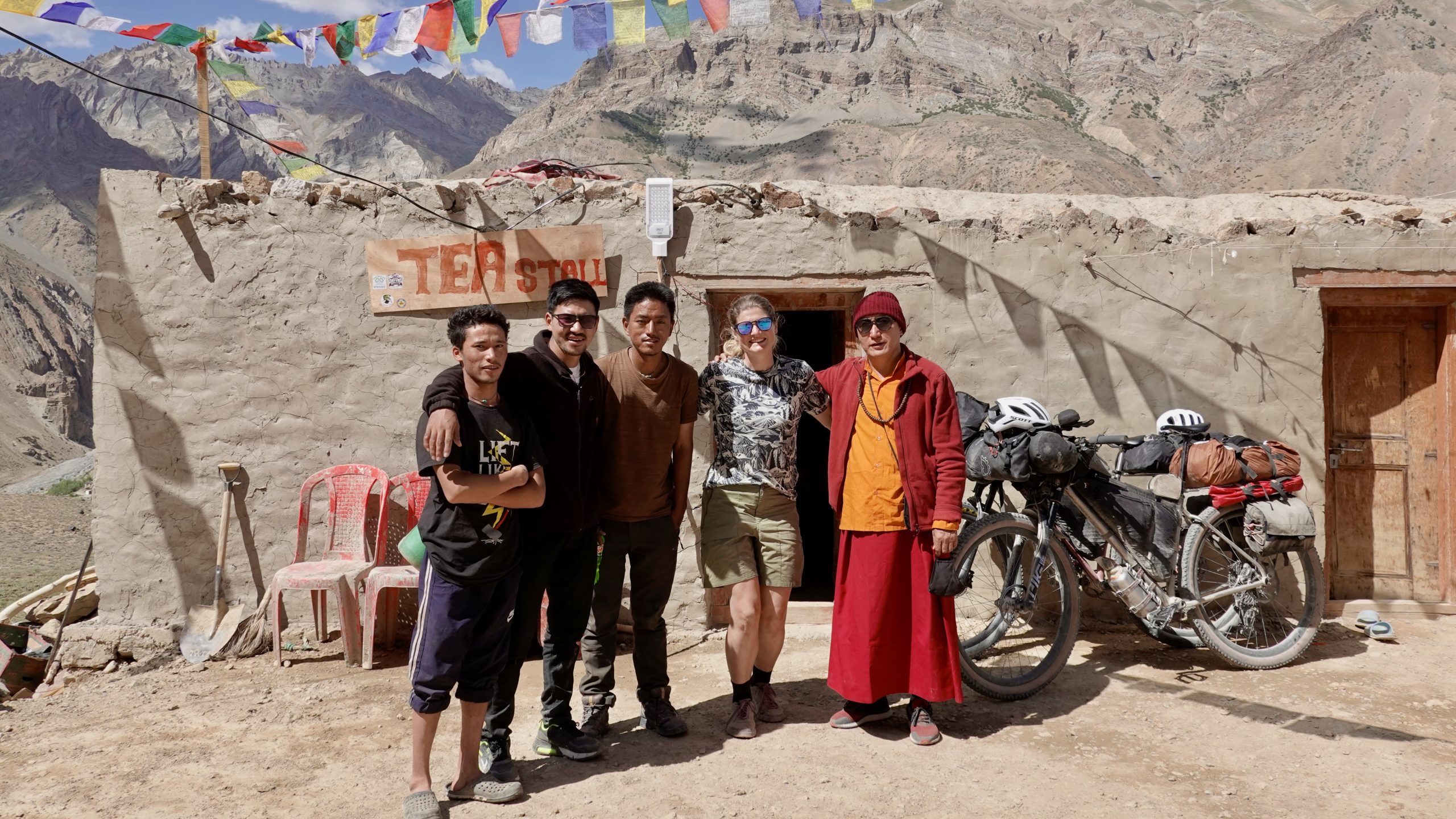They say that a picture says more than 1,000 words. So this blog post is going to say a lot – because it's hard to limit yourself when choosing images to tell the story of our journey in the Himalayas of India, in an ancient kingdom called Zanskar. A time travel back 1,000 years, to Buddhist monasteries that cling to the mountainsides of this fantastic landscape.

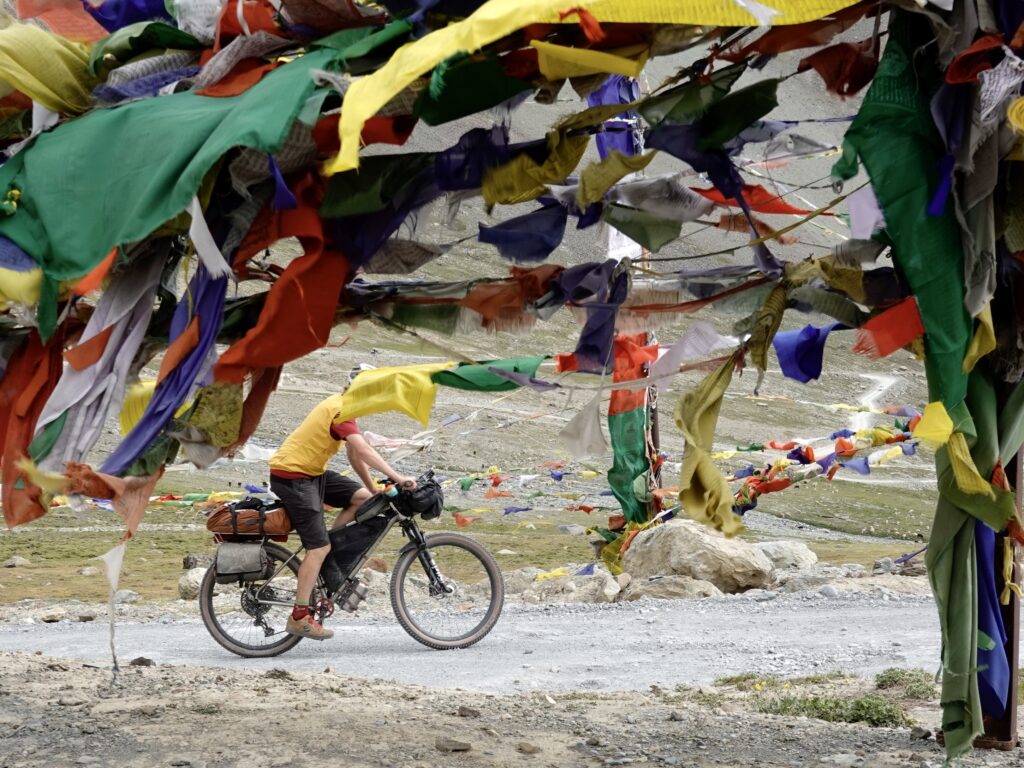



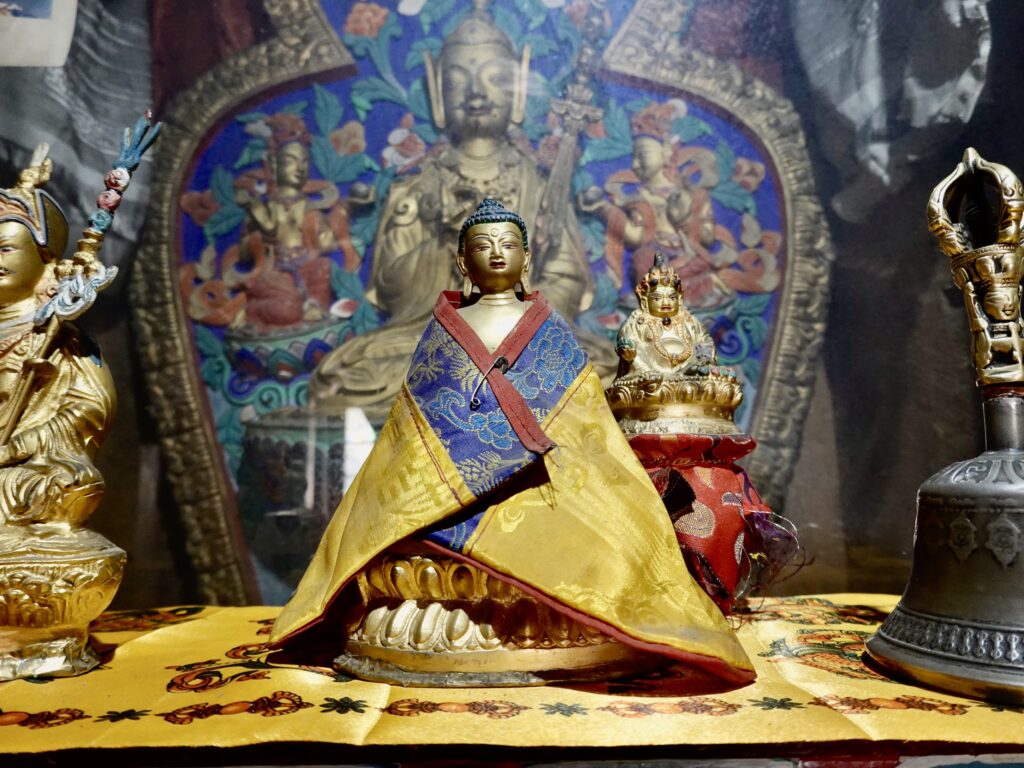
In 2022, we chose that our summer holiday should go to Ladakh, the northernmost region in India, roughly halfway between the world's two highest mountains; Mt Everest and K2. Ladakh lies between Pakistan, on its western side, and Tibet, on its eastern side. It is a formidable corner of the world for several reasons. In part, the majestic mountains of the Himalayas are an eternal source of admiration for nature's majesty and power. But it is at least as fascinating that Ladakh has preserved its Buddhist culture throughout the ages. It is said that Buddhism was born in Ladakh and only later moved to Tibet. Because Buddhism is so rooted here, you find monasteries that were built more than 1,000 years ago and are still functional today.


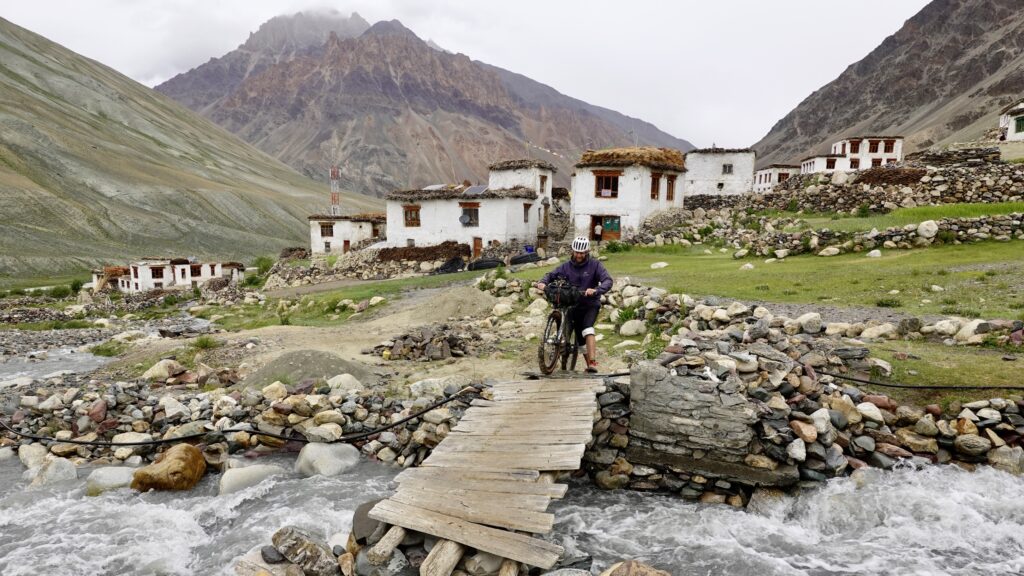
The epicenter of all this must be said to be Zanskar. It is a valley so vast and remote that it was once its own kingdom. The valley has been quite cut off from development in the surrounding region, until quite recently. Therefore, it is very clear to experience the original culture and way of life.
At the very bottom of the huge mountain area in which the Zanskardalen lies, with peaks of over 7,000m, there is an ancient monastery, built into a cave, on a cliff side. A mythical place that can still only be reached on foot.
The monastery is called Phuktal. We made it our goal to get into Phuktal and experience the life of the 70 monks who live here.
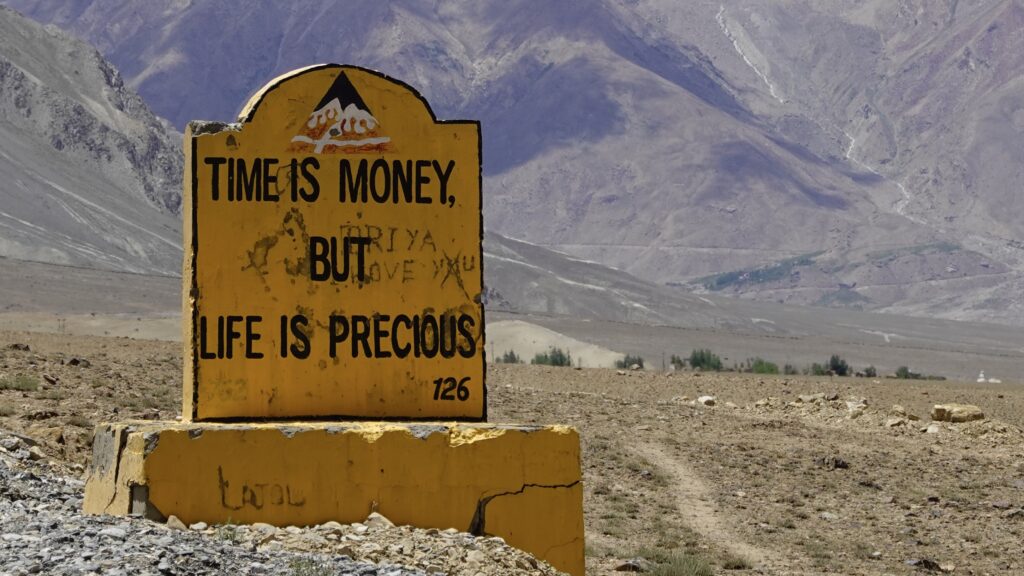

We started our journey by flying to Delhi and checking into a hotel that we had booked from home. Which we were quite happy about, because when you arrive at the main railway station in Delhi with big cardboard boxes and bags, there are lots of people who have an opinion about where to stay and how to get there.
We had previously heard a story about a westerner who had stayed inside his hotel for 4 days because he thought it was too wild and scary to venture out into the streets of Delhi. It's certainly not that bad anymore, but Delhi's lively traffic and immediate and approachable people can be a little overwhelming, to say the least. We loved it though. Big white lines wander between young men with loved ones and older men with bike taxis, cars and buses, people in wheelchairs, street vendors with sacks full of anything, and piles of garbage everywhere. Add to this the noise of it all, and you have quite a wonderful cocktail to navigate.

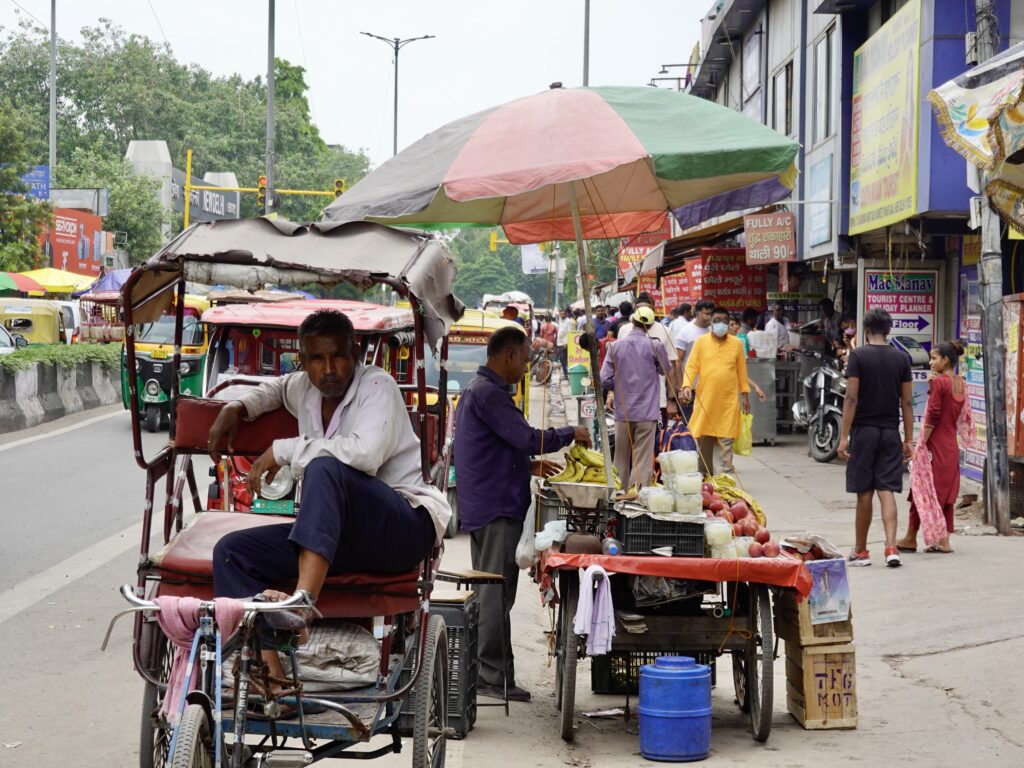
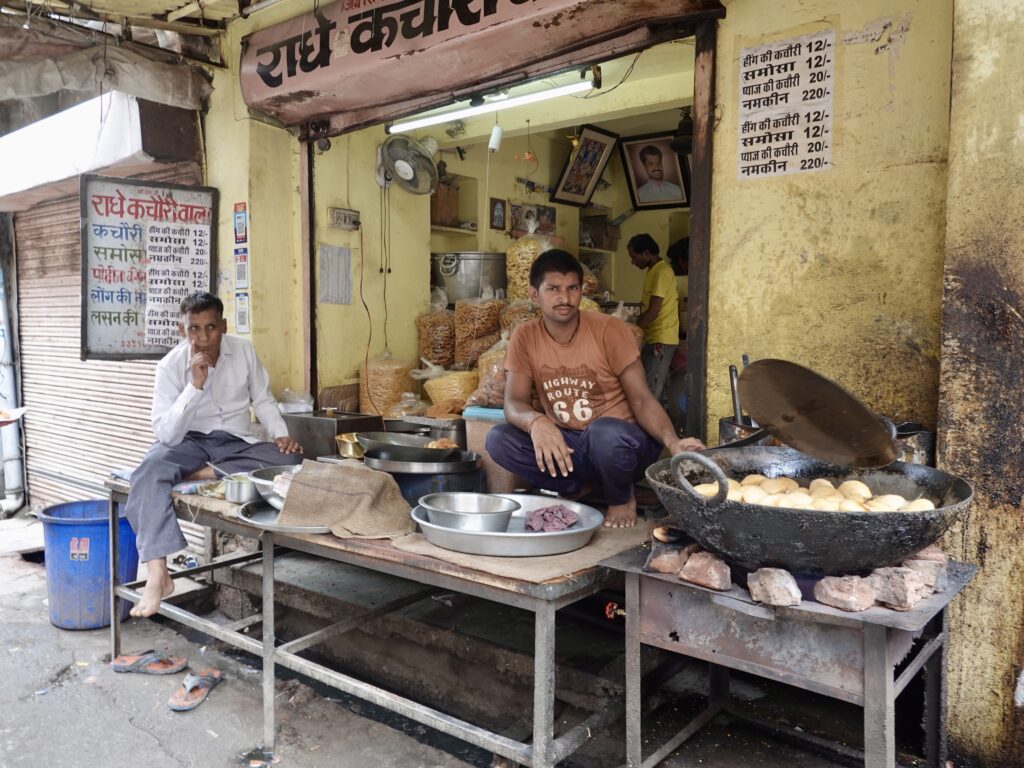
We arrived at the hotel early in the morning and already got our room. After a long needed nap, we started looking at options to get to Manali, the main town up north, from where we would start our cycling. It turned out there was a bus leaving that evening and we didn't really see any reason to hang out in Delhi so we left straight away.
The night bus was a rough experience, and we were pretty shattered when we got to Manali. But after a night's sleep we already set off on the bikes anyway. What we had simply overlooked was that if you go up a mountain pass at almost 4,000m after 2-3 days of travel and no altitude acclimatization, you also get the bill.
The route we had chosen is one of the most classic and iconic cycling routes in the world: Manali to Leh. It is a route that leads through the most fantastic mountain landscape in the Himalayas, over 5 mountain passes, at over 4,000m. The highest of them is 5,300m. On day 3 we felt it was the most beautiful cycling day we have ever had.

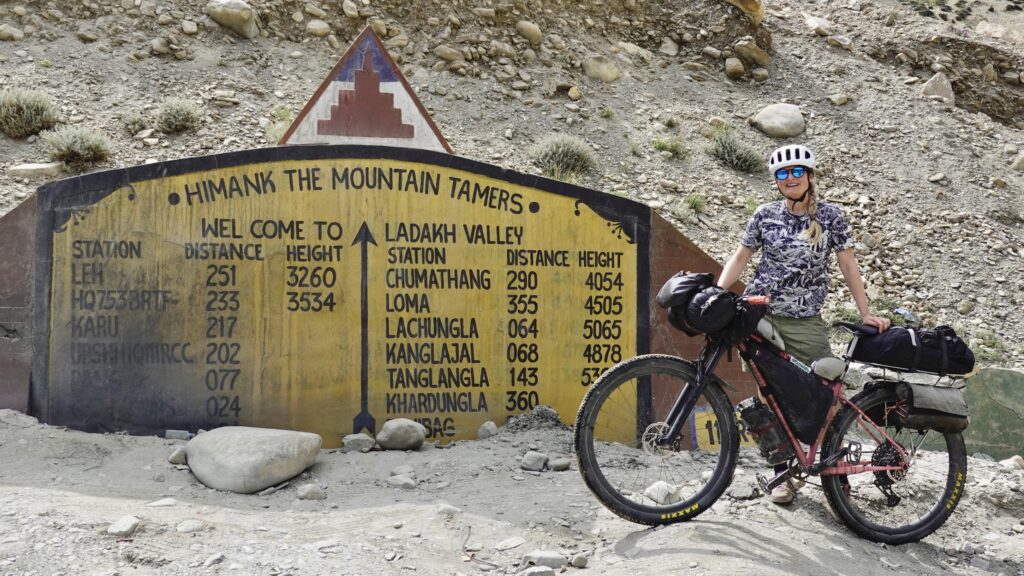

But at the same time, Marie struggled with symptoms of altitude sickness.
On the route, you get up so high quite quickly that you get "caught". Although the only cure for altitude sickness is to come down, we were on a plateau and that would mean going back over the high passes to come down. One of the passes was even closed tightly behind us as some workers were placing dynamite in the road to blow it up.
Marie felt pretty bad about the second high pass of the trip. She had to get off and walk while Kenneth towed both bikes over the pass. In the next valley, we found a tent camp where we met a group of Israeli motorcyclists. They were amazed that we didn't take pills at all, and presented Marie with a glass of diamox – pills against altitude sickness. The pills, liquid, food and rest did what they had to and Marie got back on her feet.


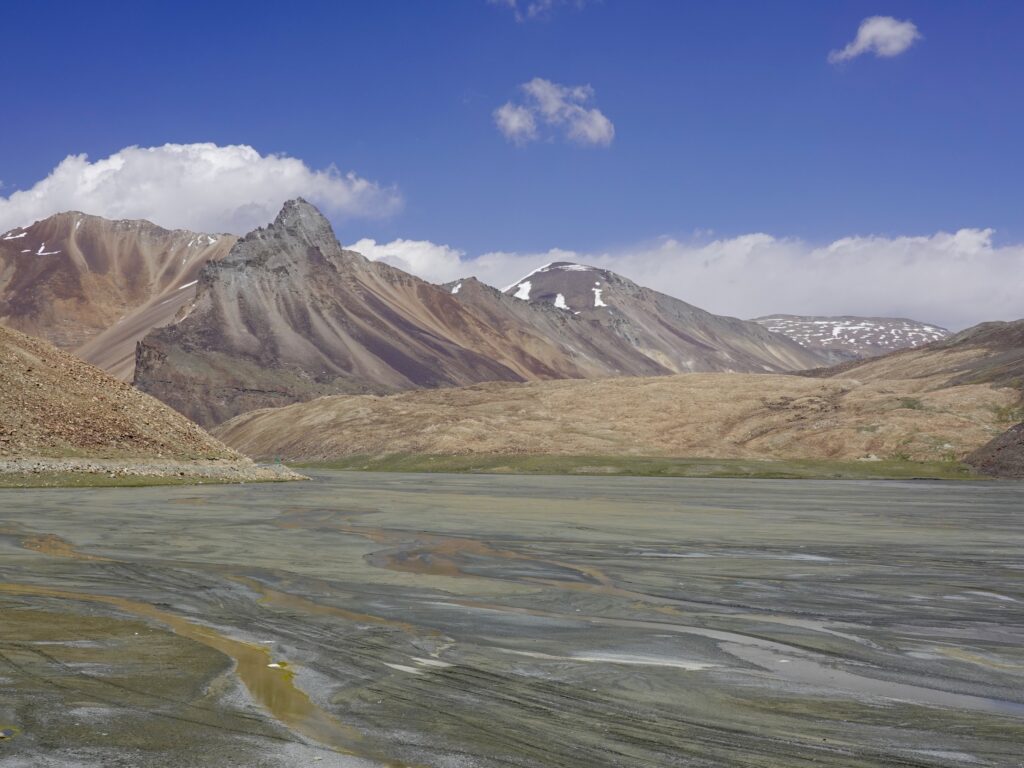

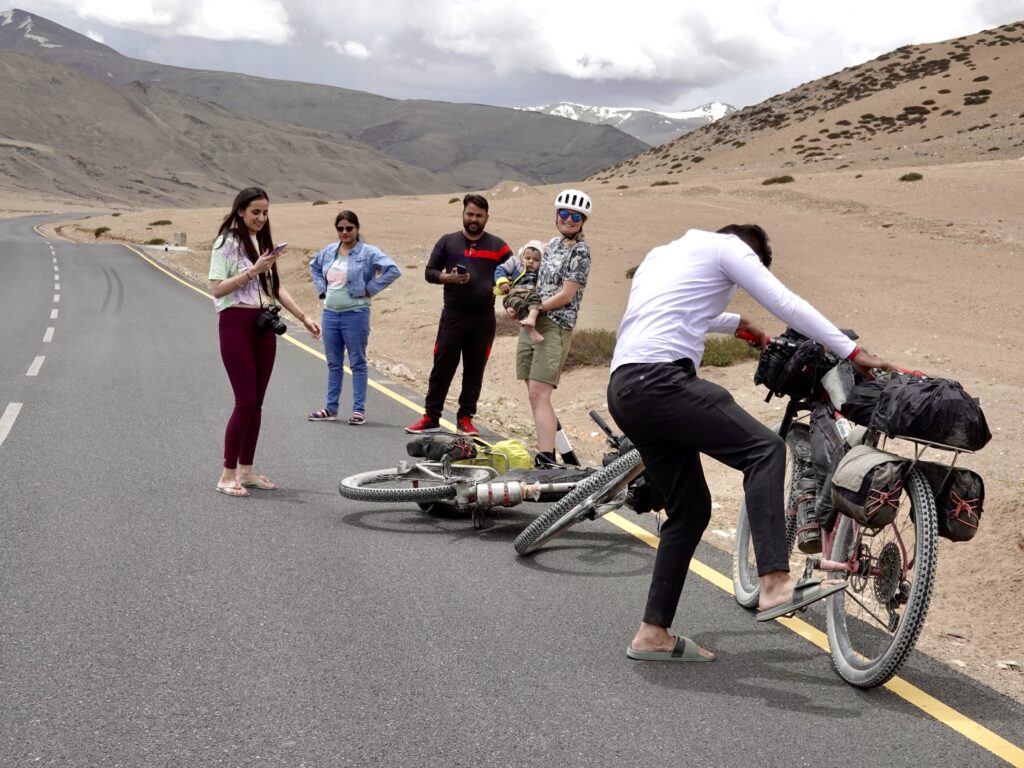
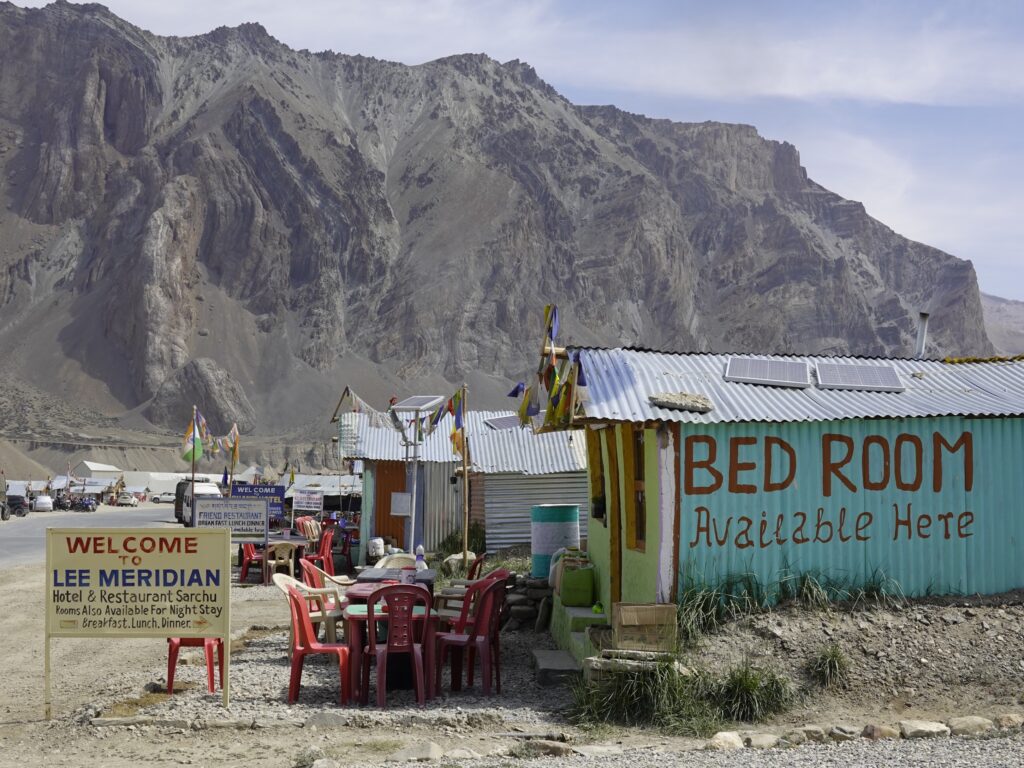
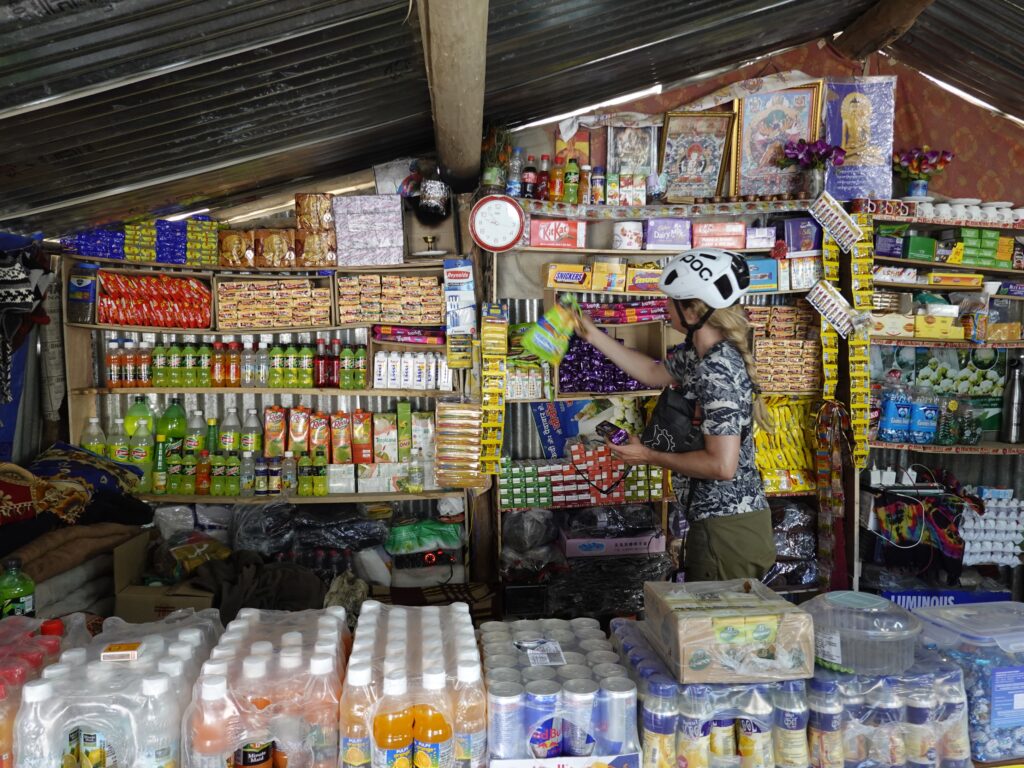
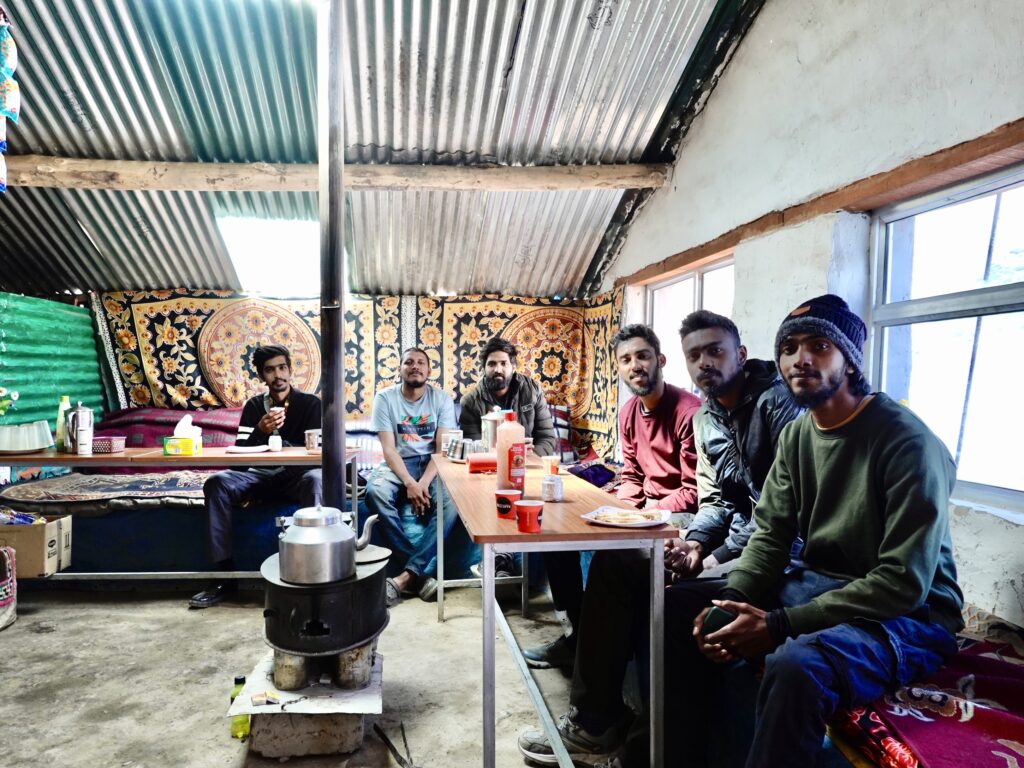
The trek from Manali to Leh is absolutely spectacular but also really tough. When we reached Leh we took a few days of rest and prepared for the next stretch. We wanted to go to Zanskar. In principle, it is easy, because there is only one way, through the huge valley. But while cycling around Ladakh we heard rumors of a new road which was being built but not yet finished. We just couldn't really get any concrete information about the road - whether it was finished, whether it was passable, which way it went. Until we met a young man who had family in one of the small towns on the new road. He was able to give us all the information we were missing. The road was being dug out. In some places it was in good condition, in other places it was not finished. But it would be passable all the way. He drew a map on a piece of paper for us, gave us his phone number and some good advice about where we could get food along the way and where we should remember to turn off.
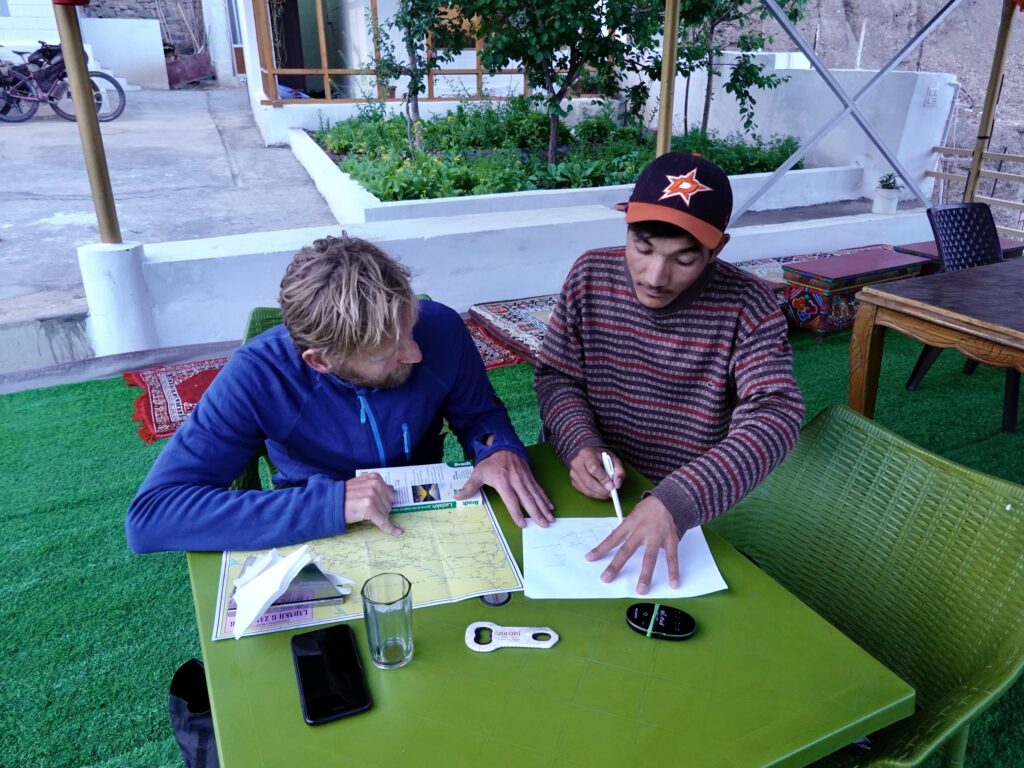



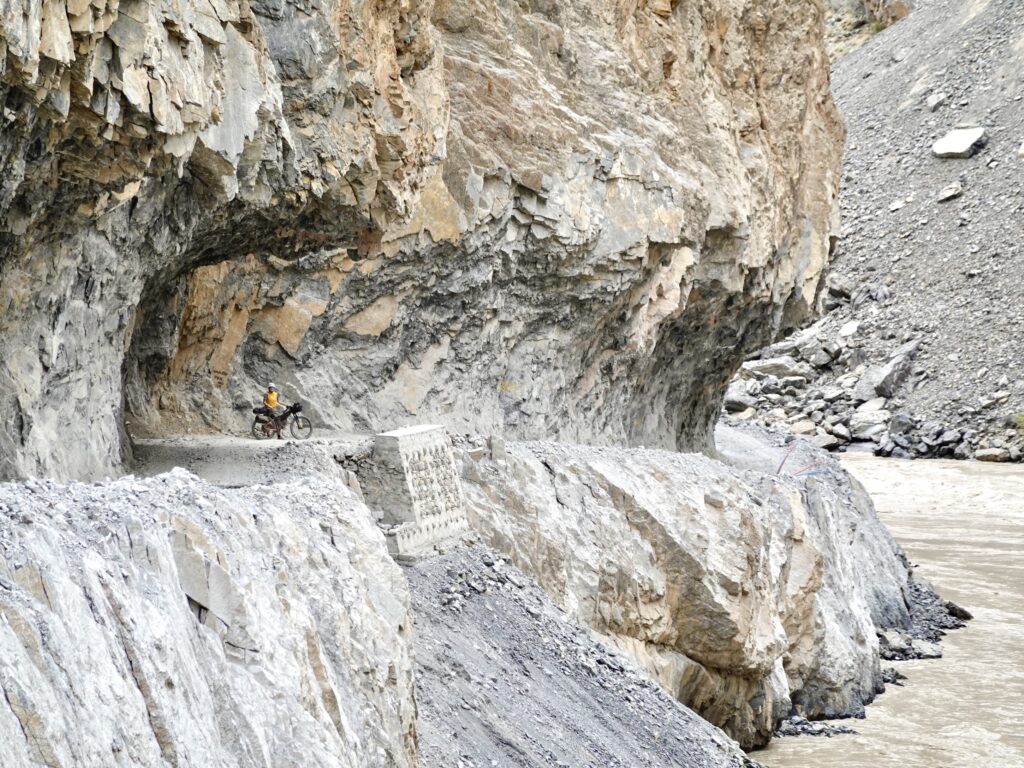
Then we got ready for adventure, and to go into Zanskar, along a road which only within the last 2 years has made it possible to drive to the villages that are there. This means that just 3 years earlier, you could only get to these small villages by walking along tiny steep paths, with your horse to carry things.
In the first small village, Hanupatta, we had been told you could buy food. But when we rolled past the empty houses, there was no restaurant, no people. We made it all the way through the town without seeing an eye, but we had to turn back, for we had calculated our rations on the basis of a meal here.
On the way back we saw a woman and asked in sign language if we could buy a meal. She nodded and waved us along. We put the bikes down and followed. We went with her into the basement of an ordinary house, obviously she invited us home.
The house was built in a completely traditional way. The animals lived in the basement. On the first floor was the kitchen and dining room. On the roof were yak dung and branches, which are to be used as fuel in the winter.
We were invited into the dining room and served tea while the woman cooked for us in her kitchen. When the food was finished, the rest of the family came and we all ate together. We got a huge portion of rice with vegetables from the garden, mildly spicy and really tasty. It was not at all burning strong, like Indian food. In fact, people in Ladakh say they don't like Indian food because it's too strong. We were huge fans of Ladakhi food already.
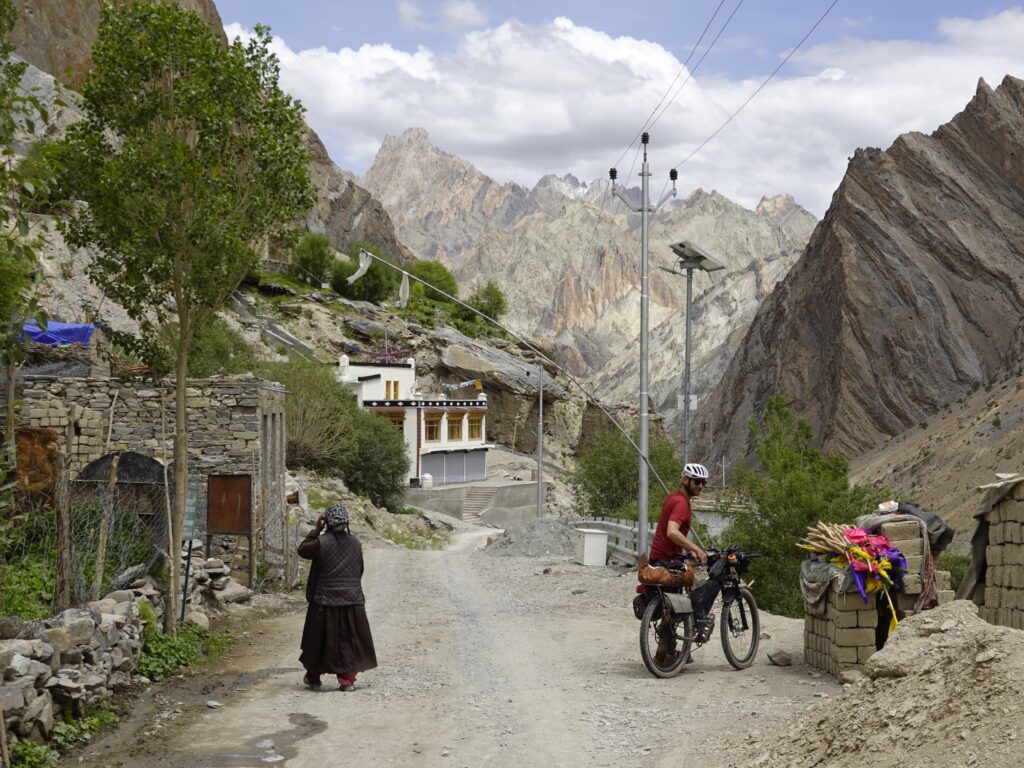
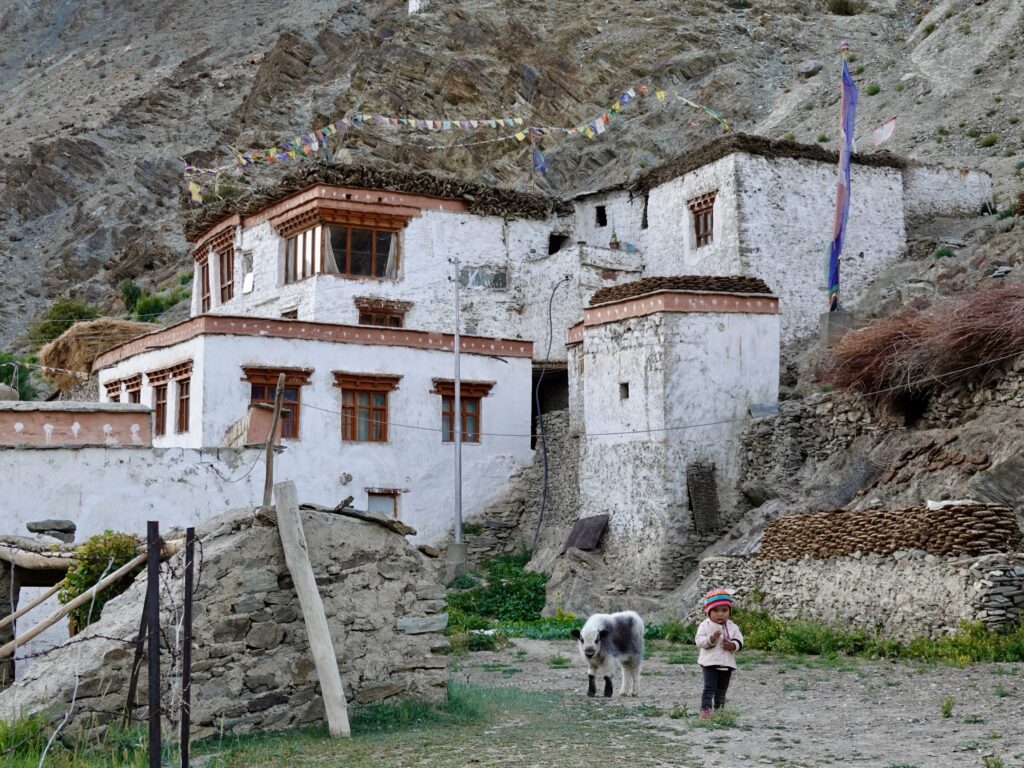

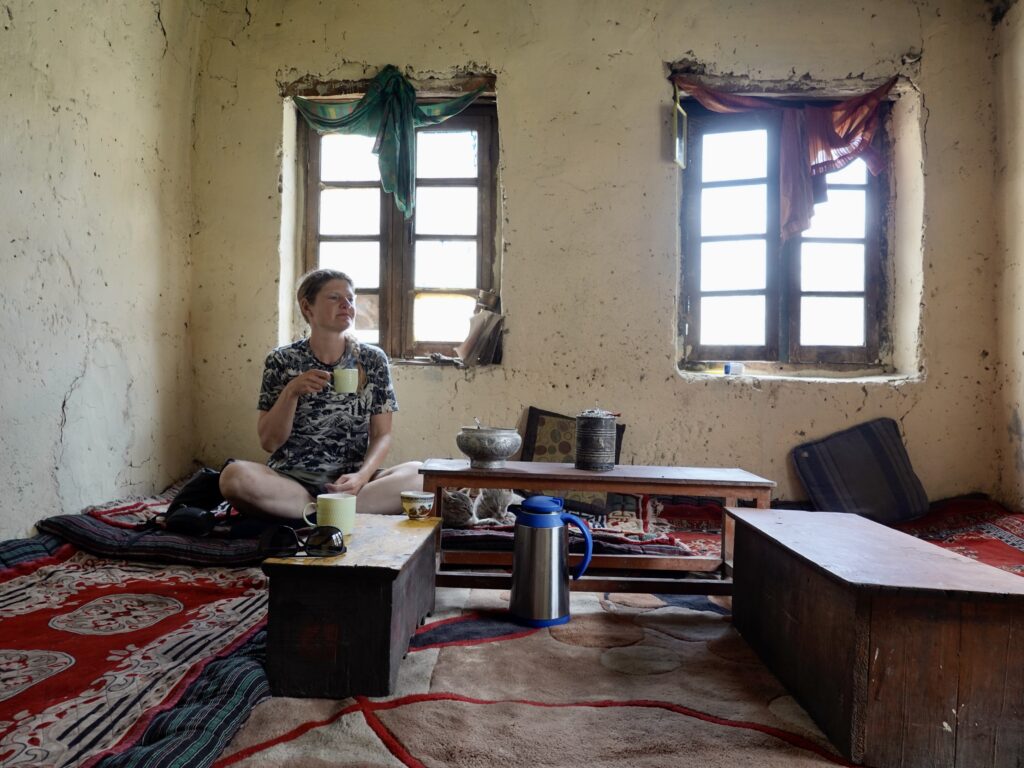



The next days we cycled slowly further and further into the bottom of the Zanskar valley, in this absolutely breathtaking landscape. Literally.
Our total route in Ladakh was about 1,200km and 40,000hm. We crossed 14 passes over 4,000m. 6 of the passes were over, or close to, 5,000m.
Finally we reached as deep into Zanskar as we could go. In here, halfway up the last climb, we found the path that leads into the Phuktal monastery. We had hoped we could cycle all the way to the monastery, but quite quickly we had to give up. The hiking trail is insanely steep in many places and in other places it is so steep that if you fall, you fall straight into the river. So we hid the bikes, packed our small backpack, and walked about 3 hours along the river to the destination of our journey. And then – as we walked around a rock outcropping – we finally saw it!




Phuktal, is a monastery built into a large cave in the mountain wall, about 1,000 years ago. But it is known that Tibetan monks have lived there and used the place for meditation as far back as 2,500 years ago. It thus has enormous spiritual significance for Tibetan Buddhism.
Today it is still a functioning monastery, which is one of the few remaining, which is still relatively cut off from civilization, because there are no roads, but only a footpath, to the monastery.
As we approached, we first passed a guest house where we could be allowed to spend the night. Here we left our things before walking the last steep path up to the monastery itself.
It was a sour feeling, like stepping into another time, entering the monastery. The whole monastery almost hangs on the cliff side and how they managed to build it so long ago is crazy to think about. Everything was built from natural materials. And yet there was a pole with solar panels on it so the monks could charge their phones. In their holiest room lay ancient scrolls in small wooden boxes. The monks wore some robes, special hats and classic red monk robes. But most young monks wore a modern sweatshirt that almost matched the color, instead of the traditional suit. It was a wonderful mix of modern present and ancient traditions.

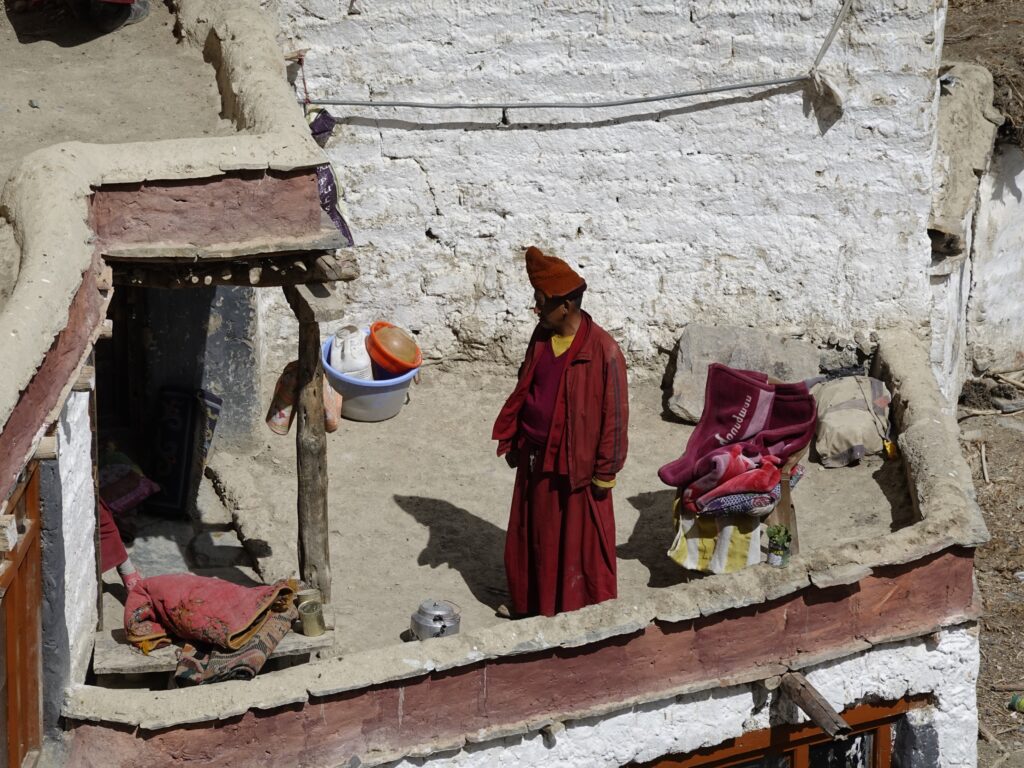

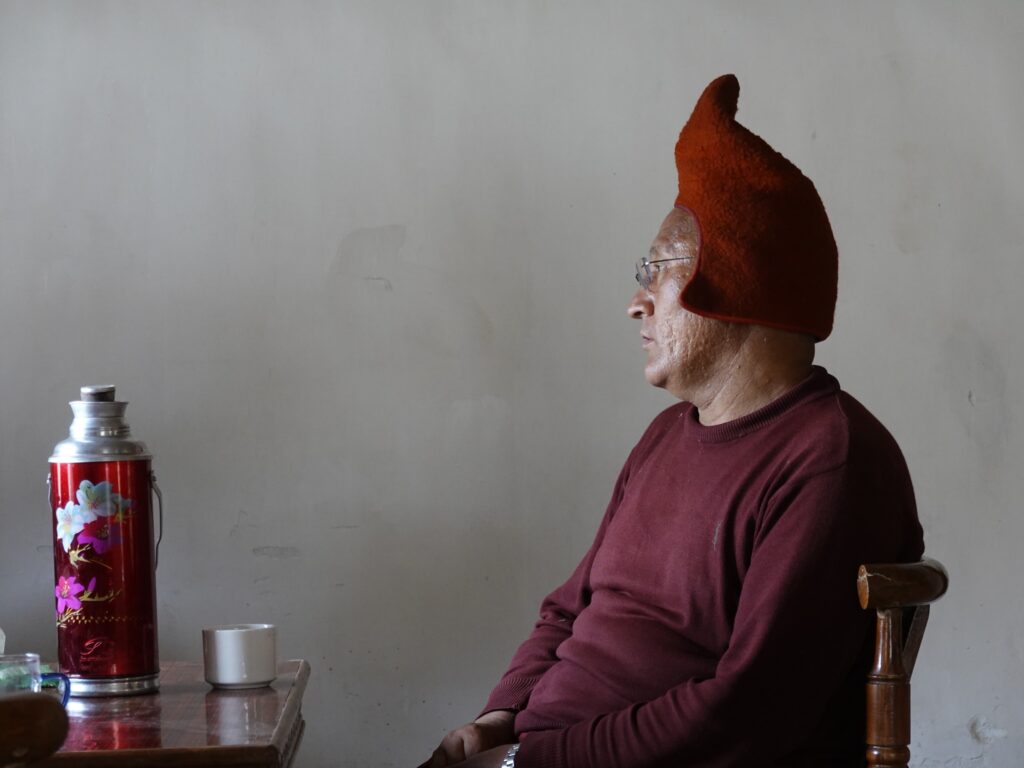
Some of the young monks, who were 14-15 years old, invited to tea in their kitchen. The kitchen mostly consisted of a huge wood-fired steel stove. The ceiling was completely black with soot, from the smoke from yak dung and wood. The boys were curious and sweet and easy to talk to. They want to go on to the big monasteries, which resemble universities, in the south of India. Hopefully it will be successful, so that they can take the knowledge home and create a balanced development of their hometown. Because it is a challenge that we hope they solve in a good way.

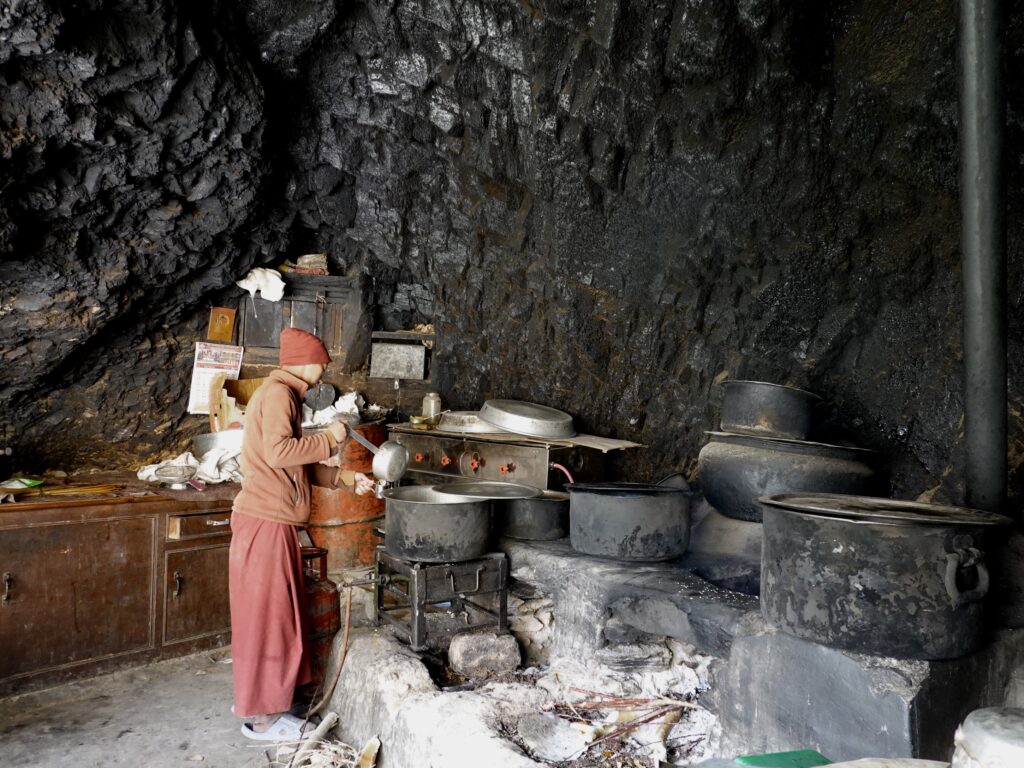
In the evening we were invited to a meal at the monastery. We sat with the monks, on a large terrace overlooking the mountains and the rushing river, with the monastery's holiest room behind us. After the meal, we watched the monks engage in debate, an ancient custom where they discuss the fundamental issues of Buddhism. And they ended the evening chanting in unison as the sun set over the valley. It sounded absolutely fantastic and it was very moving to feel how the energy between everyone present united through the monks' chanting.
A truly beautiful end to our meeting with the monks who live here and preserve the ancient customs and traditions.


It's so crazy to think that a few years ago, you couldn't drive a car. Everything took place on horseback. Although we loved the new road, which gave us the opportunity to experience unspoiled landscape and culture, unfortunately the reality is that the new road will cause a radical change to the culture and way of life here, in a very few years.
Of course we give people access to the same welfare benefits as we have at home in Denmark. But when we asked an old man about what they did in the winter, he told us, with joy sparkling in his eyes, about how the snow completely closes off the valley and how the family lives alone with the animals, as they have always done. It is clear that he had a peace and a satisfaction with the simple life and the presence with nature, which has been lost in the fast and efficient society that exists outside.
Our hope for the areas we visited in Zanskar, where development is going strong, is that it is the locals who will be allowed to drive the development, with the help of organizations that will support them. But the reality is more likely that the development is driven by economic interests and military development, and that the local population is therefore being drummed up and lost in that development. In just 2 generations, these people lose their roots, their traditions, their worldview and their way of life. It is going too fast for them to be able to stand strong in their own future, and too many of them will therefore feel lost and uncultured.
We saw grandparents working in the fields with a pick and hand, while their grandson would rather be selling chips and coke on the side of the road. But if the young generations get a good education and are supported in developing their own hometown, the future promises light and beauty for both those who live here and for the travelers who want to visit them.
Zanskar and Ladakh have won a special place in our heart.





